Table of Contents
Introduction to Rubbed and Ground Sage
If you're a spice enthusiast or a home cook who loves experimenting with flavors, you've probably come across the terms 'rubbed sage' and 'ground sage.' But what exactly is the difference between them, and why does it matter? Understanding these variations is crucial for achieving optimal flavor in your dishes. Let's explore how these two forms of sage can transform your cooking with precise culinary insights.

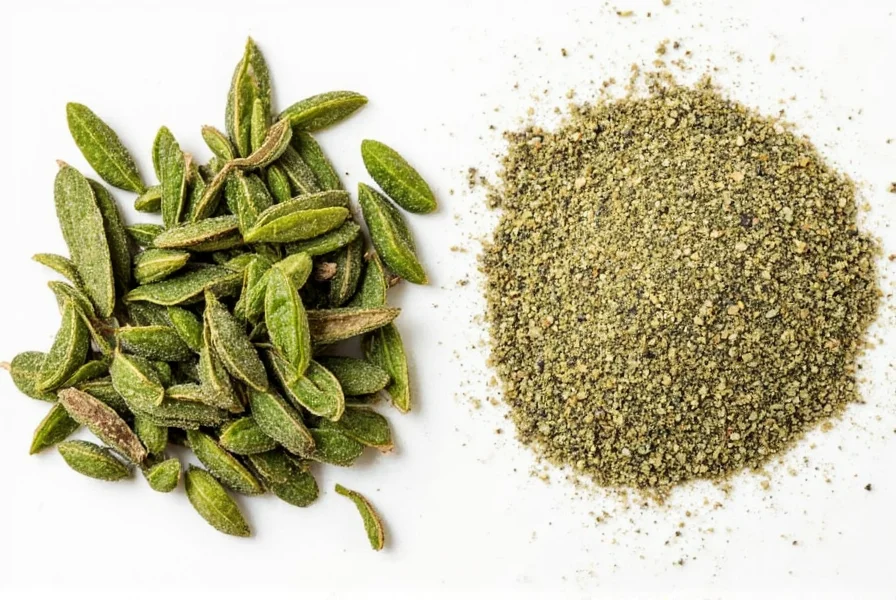
Sage is a popular herb known for its earthy, slightly peppery flavor. It's commonly used in Mediterranean and Italian cuisines, especially in dishes like roasted chicken, stuffing, and sauces. However, when it comes to using sage, the form you choose—rubbed or ground—can make a significant difference in taste, texture, and application due to their distinct processing methods.
Key Differences Between Rubbed and Ground Sage
To understand the nuances between rubbed sage and ground sage, let's break down their characteristics based on professional culinary standards:
| Feature | Rubbed Sage | Ground Sage |
|---|---|---|
| Texture | Firm, crumbly, and slightly coarse | Fine, powdery, and smooth |
| Flavor Intensity | Milder and more subtle; less surface area releases flavor gradually | Stronger and more pronounced; increased surface area intensifies flavor |
| Usage | Best for dry rubs, meat seasoning, and roasted vegetables where texture matters | Perfect for baking, sauces, soups, and blending into spice mixes |
| Shelf Life | Longer shelf life (2-3 years) due to minimal processing | Shorter shelf life (1-2 years) due to increased oxidation |
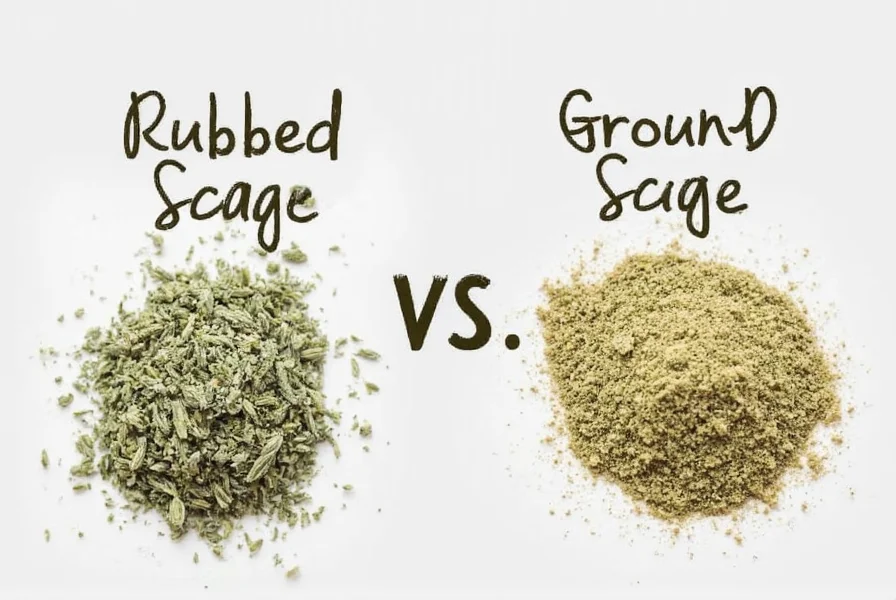
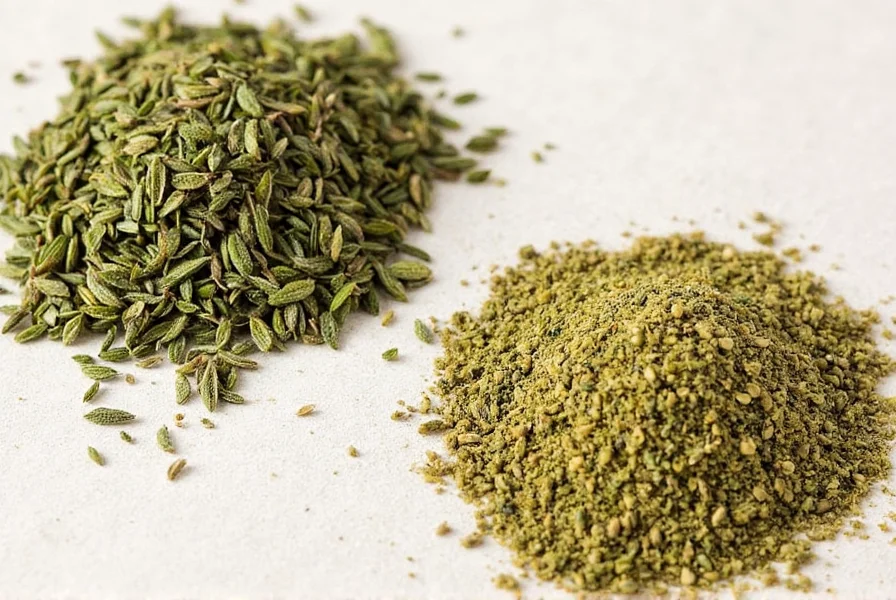
The main difference lies in their processing methods. Rubbed sage is made by gently rubbing dried sage leaves to separate the aromatic flakes from stems, preserving more of the natural oils. Ground sage is created by grinding dried leaves into a fine powder, which increases surface area and intensifies flavor but accelerates oxidation.
This distinction affects both aroma and culinary applications. Rubbed sage releases flavor gradually during cooking, making it ideal for dishes where texture matters. Ground sage delivers immediate, concentrated flavor and blends seamlessly into liquid-based recipes.
Practical Tips for Using Both Types of Sage
Whether you're a seasoned chef or a curious foodie, here are professional tips to maximize both forms of sage:
- Use rubbed sage for dry rubs: Sprinkle rubbed sage over chicken, pork, or lamb before roasting or grilling. The coarse texture holds up well and adds a subtle, aromatic finish without overpowering the dish.
- Add ground sage to baked goods: Ground sage works exceptionally well in breads, cookies, and pastries where a uniform flavor distribution is needed. Its fine texture ensures even incorporation into doughs and batters.
- Enhance sauces and stews: Ground sage blends easily into creamy sauces or hearty stews, adding depth and complexity without altering texture. Add early in cooking to allow flavors to meld.
- Season roasted vegetables: Try sprinkling rubbed sage over roasted potatoes, carrots, or squash for an earthy twist. The texture provides visual appeal and controlled flavor release.
- Make your own custom blends: Combine rubbed sage with other herbs like thyme, rosemary, or oregano for custom seasoning blends. Store in airtight containers to preserve freshness.
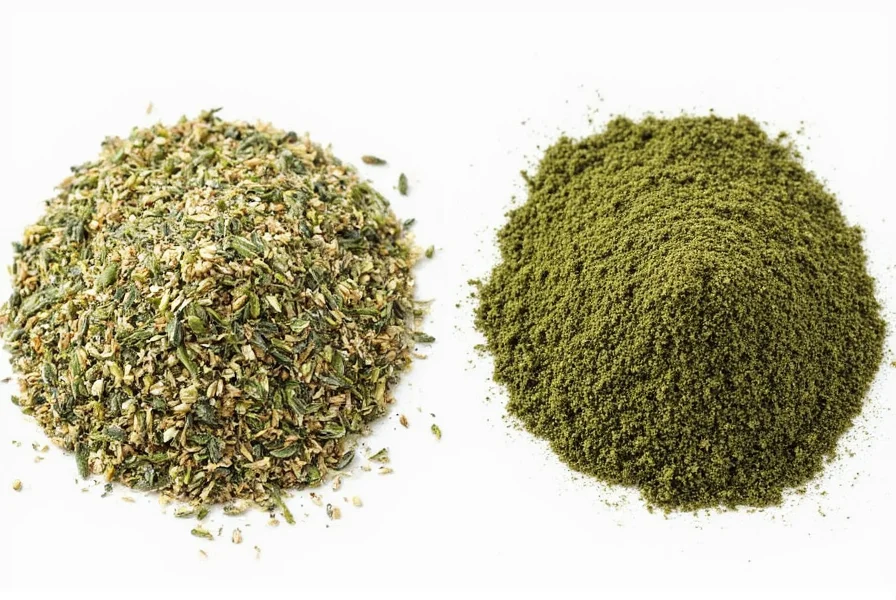
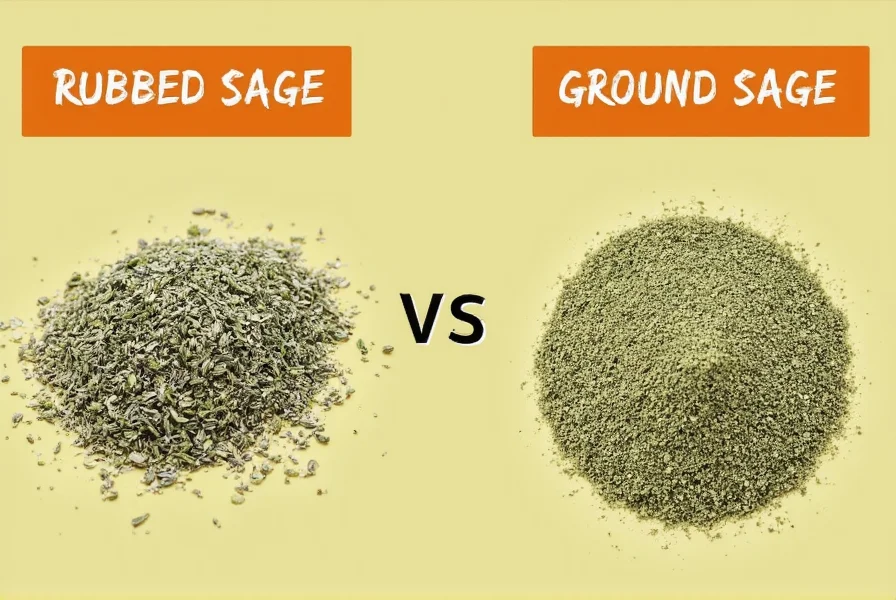
Remember, sage is potent—start with small amounts and adjust to taste. Overuse can lead to bitterness, especially with ground sage. A general guideline: 1 teaspoon of rubbed sage equals 1/2 teaspoon of ground sage when substituting.
Buying Guide: Choosing the Right Sage for Your Needs
When selecting sage, consider these professional recommendations to ensure quality and freshness:
1. Rubbed Sage
Features: Coarse texture, mild to medium flavor, ideal for seasoning and roasting.
Advantages: Retains natural oils longer, maintains aromatic complexity, and provides visual texture in dishes.
Use Cases: Best for meat rubs (especially poultry and pork), roasted vegetables, stuffing, and as a finishing touch on breads or focaccia.
Target Audience: Home cooks who enjoy hands-on cooking and want authentic, textured spice profiles.
Suitable Occasions: Holiday meals, weekend roasts, and casual gatherings where rich, earthy flavors are desired.
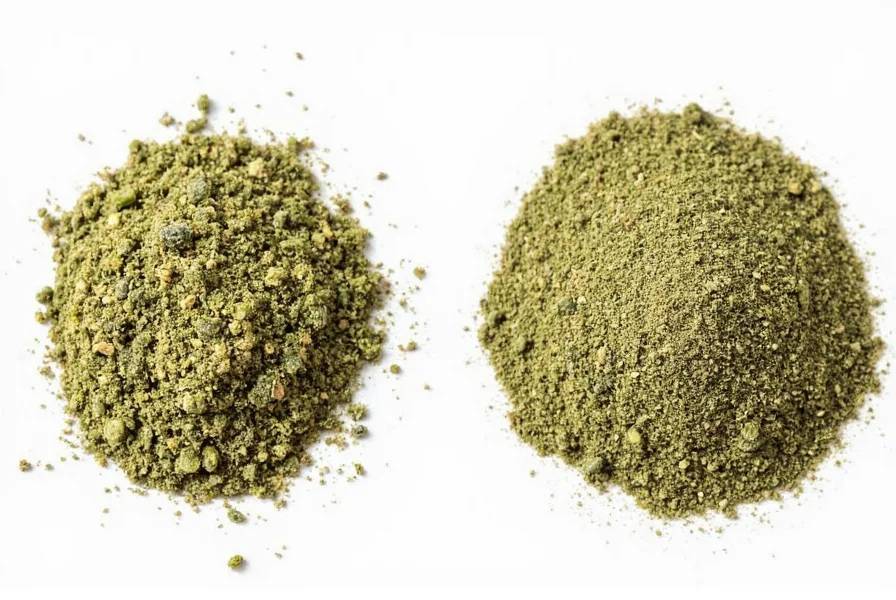
2. Ground Sage
Features: Fine texture, strong and aromatic, ideal for baking and blending.
Advantages: Consistent flavor distribution, easy to incorporate into recipes, and ideal for quick seasoning needs.
Use Cases: Perfect for soups, sauces, breads, and as a base for spice blends where smooth texture is required.
Target Audience: Bakers, busy cooks, and those who prefer convenience without sacrificing flavor quality.
Suitable Occasions: Everyday cooking, family dinners, and any recipe requiring even seasoning distribution.
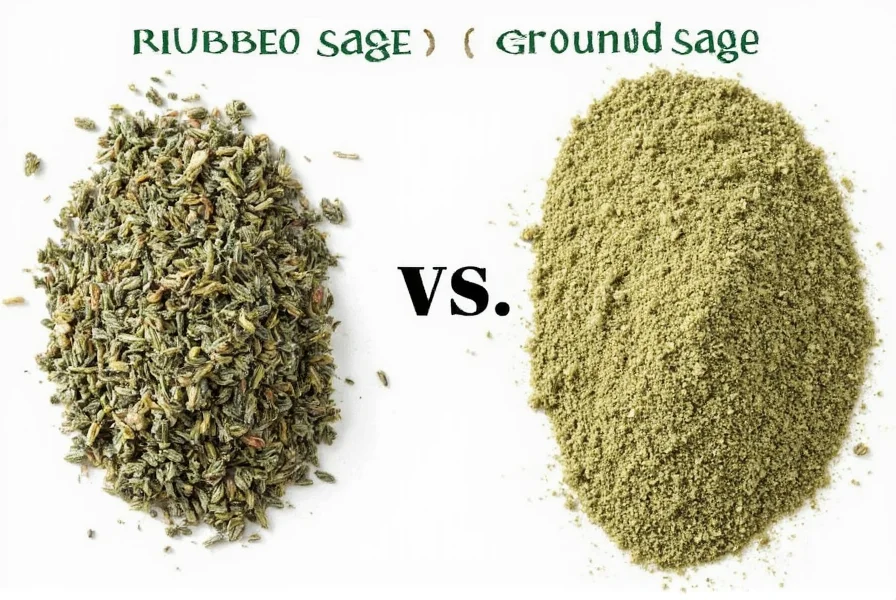
When choosing between the two, consider your cooking style. For dry applications where texture matters, choose rubbed sage. For liquid-based recipes or baking, ground sage delivers superior results. Always check for freshness—sage should have a strong, clean aroma and vibrant color. Avoid products with clumping or discoloration.
Frequently Asked Questions
What is the main difference between rubbed sage and ground sage?
The main difference is in their texture and processing. Rubbed sage has a crumbly, slightly coarse texture made by gently rubbing dried sage leaves to release the aromatic parts while preserving leaf structure. Ground sage is a fine powder created by grinding dried sage leaves completely. This difference affects how they release flavor and where they work best in cooking.
Can I substitute rubbed sage for ground sage in recipes?
Yes, but with precise adjustments. As a general rule, use 1 teaspoon of rubbed sage for every 1/2 teaspoon of ground sage required in a recipe. Since ground sage has more surface area and releases flavor more intensely, you'll need less of it. When substituting ground sage for rubbed sage, double the amount of rubbed sage to achieve equivalent flavor intensity.
Which type of sage lasts longer?
Rubbed sage typically has a longer shelf life (up to 2-3 years) compared to ground sage (about 1-2 years). This is because the larger surface area of ground sage causes it to lose its essential oils and flavor more quickly through oxidation. Store both in airtight containers away from heat and light to maximize freshness.
Why does ground sage have a stronger flavor than rubbed sage?
Ground sage has a more intense flavor because the grinding process significantly increases surface area, releasing more essential oils and allowing flavors to disperse more readily in dishes. Rubbed sage releases its flavor more gradually during cooking due to its coarser texture and less surface exposure, resulting in a more subtle presence.
What dishes work best with rubbed sage?
Rubbed sage shines in applications where texture matters and gradual flavor release is beneficial. It's excellent for meat rubs (especially on poultry and pork), roasted vegetables, stuffing, and as a finishing touch on breads or focaccia. Its coarser texture holds up well during roasting and grilling without becoming bitter.
Can I make my own rubbed or ground sage at home?
Absolutely! For rubbed sage, take dried whole sage leaves and rub them between your palms over a bowl—the soft aromatic parts will fall off while the stems remain. For ground sage, use a spice grinder or mortar and pestle to grind dried sage leaves to your desired consistency. Homemade versions often have superior flavor to store-bought and allow you to control freshness.
Is one type of sage healthier than the other?
Nutritionally, both forms contain similar beneficial compounds like antioxidants and anti-inflammatory properties. Neither is significantly healthier than the other—the main differences are culinary. Both should be used in moderation as part of a balanced diet. For health-focused applications, consult a qualified nutrition professional.
Conclusion
In the world of spices, the difference between rubbed sage and ground sage might seem minor, but it can significantly impact your cooking. Rubbed sage brings a rustic, aromatic touch to dishes where texture matters, while ground sage offers a more uniform and intense flavor for liquid-based recipes. Understanding these differences helps you make informed choices and elevate your culinary creations.
So next time you reach for sage, take a moment to decide whether you need the coarse, earthy charm of rubbed sage or the fine, powerful punch of ground sage. Either way, you'll be adding a delicious layer of flavor to your meals.
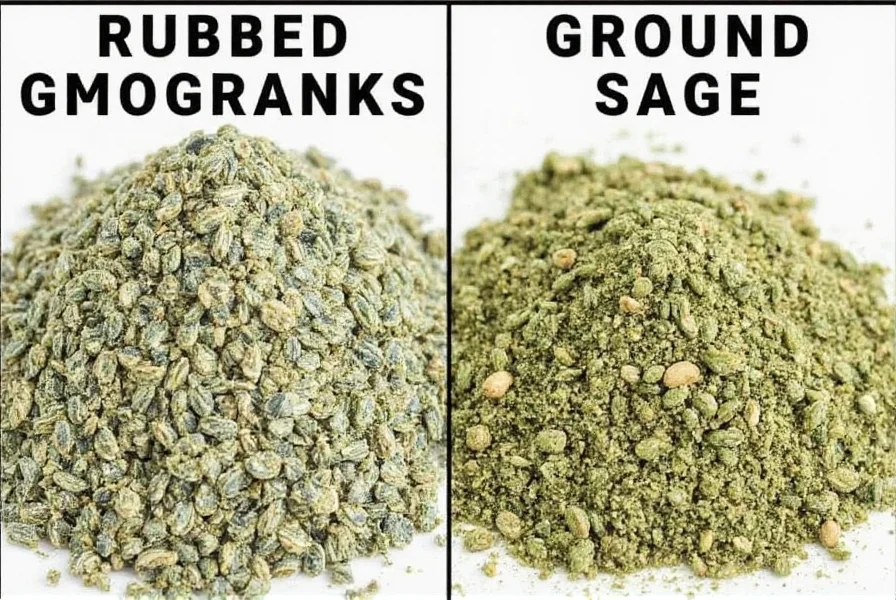
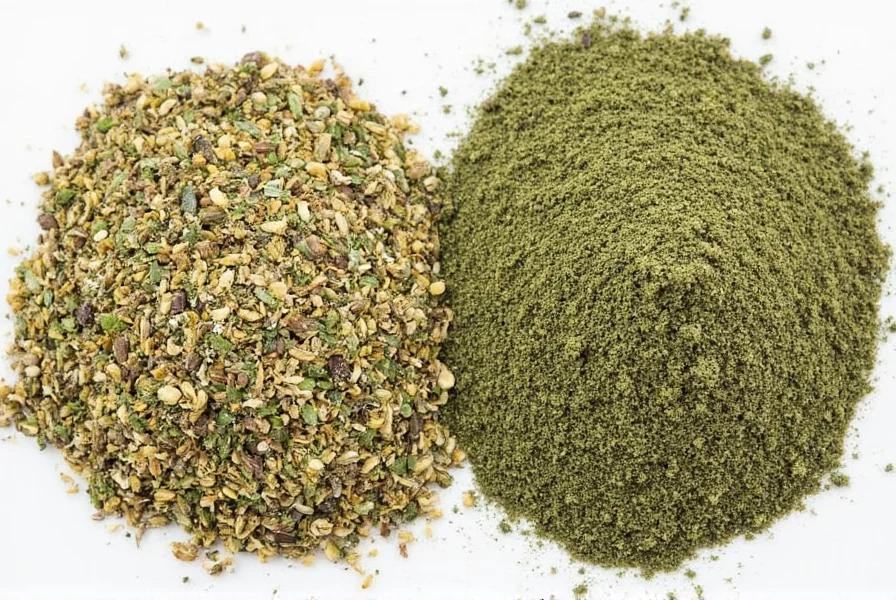
Remember, the key to great cooking is experimentation. Don't be afraid to mix and match different types of sage or combine them with other herbs. With a little creativity, you can unlock a whole new world of flavor while respecting the unique qualities of each sage form.

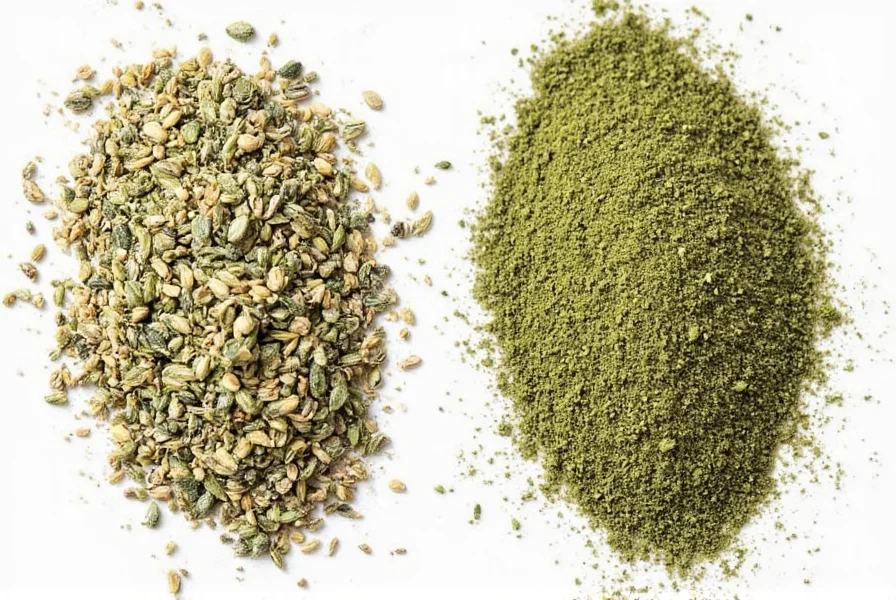









 浙公网安备
33010002000092号
浙公网安备
33010002000092号 浙B2-20120091-4
浙B2-20120091-4